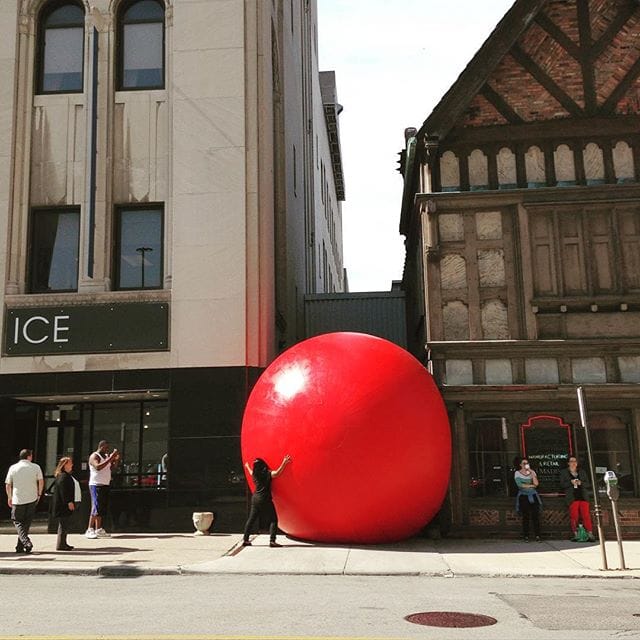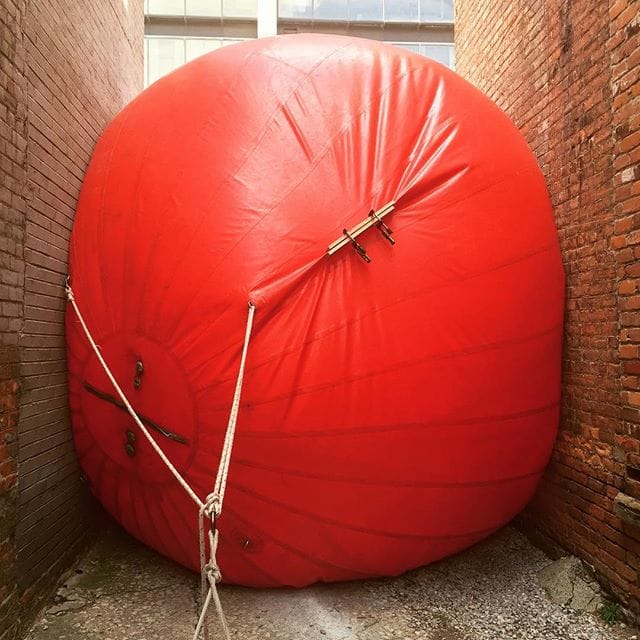Holy Toledo! Big Red Art Ball Makes a Roll for It
On Wednesday night, a giant, 250-lb red ball tumbled down a road in Ohio, spurring locals to break the age-old command of parents to not chase rogue balls in the streets.

On Wednesday night, a giant, 250-lb red ball tumbled down a road in Ohio, spurring locals to break the age-old command of parents to not chase rogue balls in the streets. The sphere, which is inflated, is the star of a traveling public art project by Brooklyn-based artist Kurt Perschke and has surfaced in cities around the world for over a decade. Last week, it arrived in Toledo, Ohio, to take a 10-day tour of the town; day six found the ball wedged in an alleyway, but wind pressure from an intense storm that struck during de-installation turned the space into a wind tunnel, popping the ball out and blowing it away. From there, the orb, tasting freedom and fueled by the gale, took a left turn off an empty intersection and continued on its path with people hot on its tail. The chase, thankfully documented by a fan from a parking garage, ended with pursuers successfully parking the gumball-like work on a sidewalk — but not before it grazed a stop sign and the sides of a couple of cars.
The sign, according to The Blade, was slightly bent, but no one reported any additional damages or injuries. The one who suffered most, perhaps, was the escapee itself, which is made of soft material and required some patching. Now repaired, it’s back in action, ready to roam the world’s streets in its crowd-pleasing role as a site for creative, cheesy, and bizarre selfies. After Toledo, it will roll into France, making a stop in Marseille and Bordeaux. Perschke has yet to announce plans for RedBall to land in London’s Trafalgar Square — the site of a controversial ad that had him battling over copyright infringement with one of the world’s largest oil companies.
As Perschke explained to Hyperallergic, RedBall, meant to bring attention to usually overlooked corners of a city, is actually anchored to its sites by its own internal air pressure rather than by a system of weights and ties.
“Like a boat with lots of sail and no rudder, it can really move in high winds,” Perschke said. “It’s always pinned into a location, playing with the architecture and spaces of a city.”
“I guess that day it decided to go for a little jog in the rain.”





